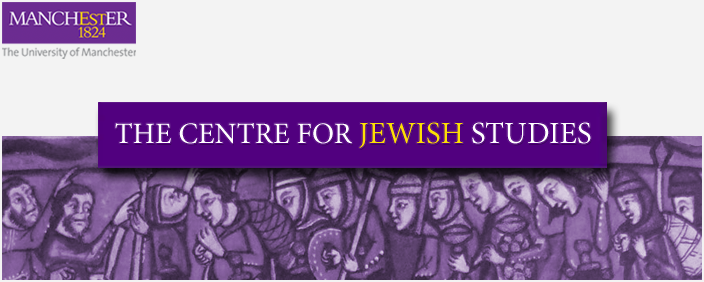Exciting things ahead!
 Monday, March 11, 2019 at 3:20PM
Monday, March 11, 2019 at 3:20PM  The last few months have been bustling with activities and the project is progressing steadily.
The last few months have been bustling with activities and the project is progressing steadily.
In January the Manchester’s Centre for Jewish Studies, as the hub of Northern British Isles Jewish Studies Partnership, organised a meeting specifically designed around the 50 Jewish Objects project. Colleagues from several of the partnership institutions contributed to the meeting, which included descriptions of Jewish artefacts at Leeds, Edinburgh, Dublin, Bangor and Manchester University collections, as well as Chester Cathedral.
Some of objects that I plan to select, research, write about and present to different audiences, are held at these institutions. This first meeting was devoted to describing some of the candidates from partnership institutions for inclusion in the 50 Jewish Objects narrative, and models for how to structure the narrative connecting them. Creating and reinforcing the network between institutions and especially between researchers is one of the aims of the Northern Partnership, and the 50 Jewish Objects project has begun to add another dimension to that.
Colleagues presented brief description of extremely relevant and fascinating pieces, from books, to liturgical paraphernalia, modern artwork and manuscripts unexpectedly reused for new purposes. I will start to visit these institutions soon, and the final selection of objects for inclusion will ideally fit three purposes: align with my own research interests and the overall narrative of the book; complement the knowledge already available about these objects at then Northern Partner institutions; and engage interested general local community audiences.
We also explored academic or public events that might be organised and hosted at partner institutions regarding their own Jewish artefacts. Colleagues showed particular interest in co-presenting or hosting short workshops on material culture in general and Jewish objects in particular for University and general audiences. At the meeting colleagues also decided that the Northern Partnership should devote its next research meeting to questions of research and teaching of Jewish material culture and the opportunities for cooperation between institutions that arise from material culture holdings. This was felt to be particularly apt, as Jewish Studies is often still a text-centric field. The Northern Partnership research meeting will precede the next Dotoral and Early Career research training event on 25 June 2019.
A second major development of the last months is the involvement of an artist’s commission as part of the 50 Jewish Objects activities. At the beginning of February we published an advert for a commission of a creative piece of art to respond to one or more objects from the collection of the John Rylands University Library of Manchester. The response to this public competition has been tremendous. The proposals we received were fascinating and diverse and I shall report in my next blog on the panel’s final choice of an artist’s proposal.
I am personally very enthusiastic about this aspect of the project. It is a completely new field for me, which I find exciting but also challenging. I like collaborating, but have never had the opportunity of engagement with artists personally. I am very much looking forward to learning more about how artists relate to and are inspired by objects. I am curious to capture their creativity and their emotional reactions when looking, observing and handling the objects. I would also like to gain a deeper understanding of how their creative activity works and how their artistic products take shape. It will also be fascinating to observe the artist’s interaction with a public and how ideas to attract an audience’s interest and engage them in collaboration become implemented. This last aspect could be especially relevant and inspiring for my own future public engagement activities, which will take place throughout the project.
I have now completed my own provisional selection of 40 Jewish objects held at the John Rylands Library at the University and some other institutions (e.g. Chetham’s Library). You can find this list here, with a brief description of some of the items and a glossary of Hebrew terms.
As you will see, this includes a great number of items involving written text: printed books, manuscripts, scrolls, or fragments of these. This reflects the kinds of collections I am using, mostly libraries, which are the keepers of our textual heritage. Yet there are many non-book items among them, and all of the objects are intimately connected to the everyday culture and society in which they were created. Throughout the project and my research I am resolved to keep the material and ‘bodily’ aspect in mind: I will of course take the text that a piece of paper bears into account, but I will also consider the paper’s physical characteristics. I will try to uncover traces of the intellectual, religious, emotional and sensorial interaction that often clearly happened between the object and the person who produced it first, as well as the ones that held and used it later.
That’s all for today, but come back for more news on objects, events and artists in the coming weeks!
Image: Hebrew MS 22 - John Rylands University Library Manchester CC BY-NC-SA 4.0




Reader Comments